The rise of Kamala Mills, or even BKC, wasn't as organic as you'd think. Meet the realty experts who spot nightlife potential among Mumbai's concrete clusters
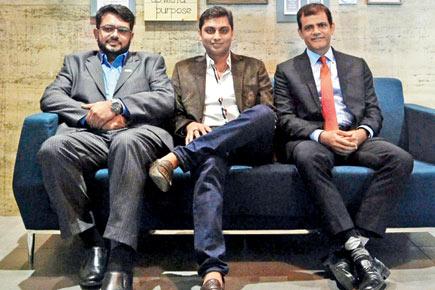
Meet Mumbai's hospitality hub creators
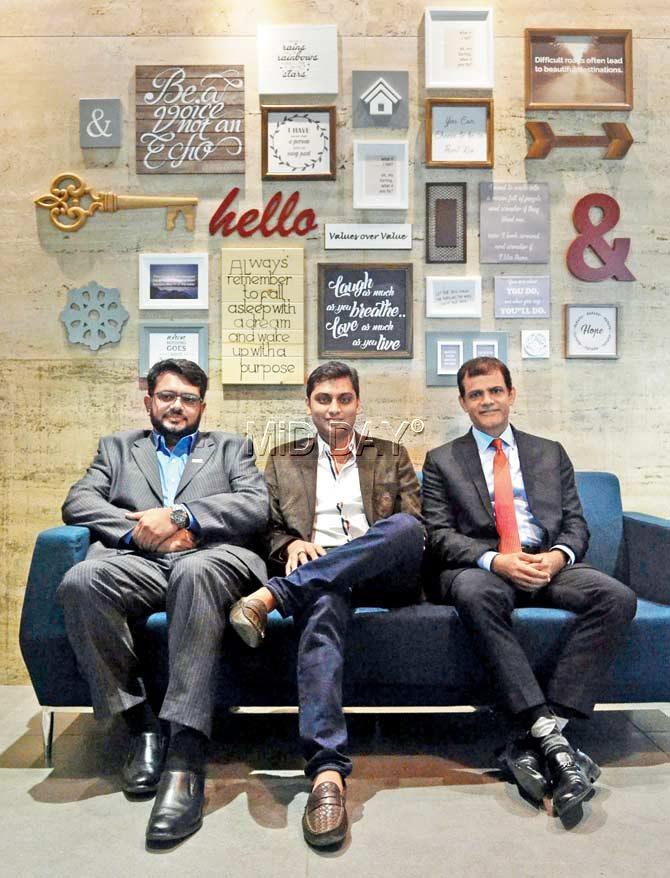
Aditya Sachdeva of Knight Frank, Chirag Maru of T Realty and Anuj Puri of Anarock at BKC. PIC/DATTA KUMBHAR
ADVERTISEMENT
Dressed in a navy blue linen jacket, a crisp white shirt and Gucci shoes, Chirag Maru looks like's he headed for a party. But, it is only 10 am. The 33-year-old is, instead, heading to Kamala Mills - a 27 acre area in Lower Parel that he has transformed into a food and nightlife hub in two years.
He needs a few minutes to respond to the barrage of WhatsApp messages he has received. In the city's F&B world, he's the man of the hour. When the big daddies of hospitality want to set up shop - swanky night clubs, fine dining restaurants, dessert shops, cafes and pubs - he's the one they turn to.
During his seven-year stint at Knight Frank, a London based property consultancy firm with branches in UAE, Germany, India and US, he closed deals like Farzi Cafe at Kamala Mills and The Good Wife at Bandra-Kurla Complex (BKC). "In 2010, I saw an opportunity in the restaurant business. No broker was focussing on this area. I used to travel a lot, and saw international brands like Wagamama, Chipotle and Ping Pong doing exceptionally well. I realised the restaurant industry could boom here. With half the population below 25, we have the spending power. I started calling big names in the industry like Riyaaz Amlani, Anjan Chatterjee, Zorawar Kalra, AD Singh, Priyank Sukhija and Mihir Desai for brokerage work. Sometimes, I had to wait hours to see them, and travel to Mumbai and Delhi," says Maru who then created a list of restaurants that were doing well versus those that were looking to shut shop in Mumbai. This he calls his Demand Supply List.
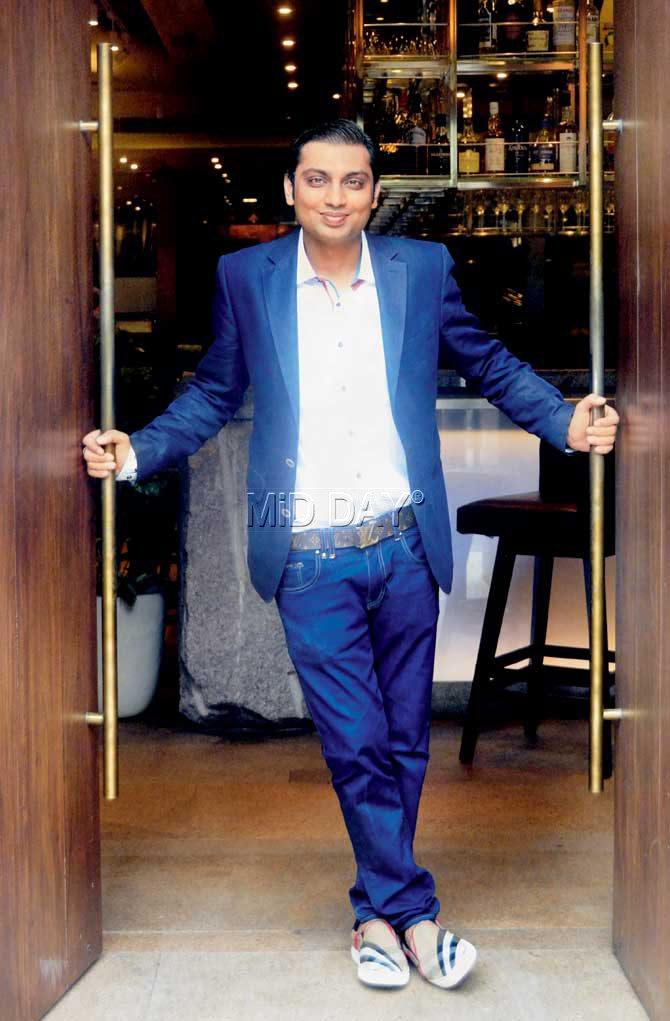
Chirag Maru
Cluster format
Starting with leasing restaurants in Palladium, the luxury mall inside Phoenix Mills in 2008, Maru spearheaded leasing and zoning for R-City Mall in 2012 followed by Infiniti 2 and Oberoi Mall in 2013. Meanwhile, Yauatcha's success in BKC made him realise the potential of the office complex. While other leasing companies were at work, Maru was roped in to do the zoning for all the under-construction buildings there. "I had to convince developers, who had plans to give out spaces on first and second floors, to change their plan and allot ground floor spaces to restaurants to replicate London and Hong Kong corporate office models. While the rent would be lower than a bank would pay, I explained to them that the offices would move fast, and it would create a lucrative ecosystem in the long run."
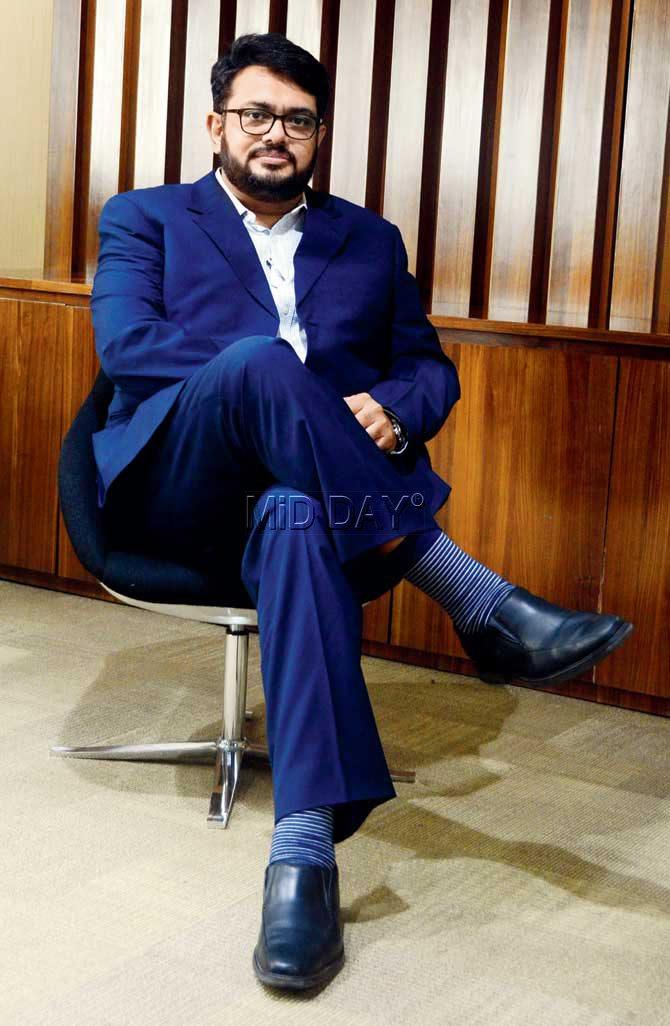
Aditya Sachdeva
Eyes on Lower Parel
In 2014, Maru met Nikhil Govani of Kamala Mills. "The 27 acre-plot was a gold mine that would draw crowds from south Mumbai, Bandra, Chembur and Juhu if developed into a food hub. The Jain family was against restaurants serving non-vegetarian fare but my dream was to create Singapore's Clarke Quay here. I believed in my vision to create India's best F&B hub," he says. Initially, they leased out spaces to whoever paid the highest rent, but that resulted in players pulling out. "We then decided to rope in powerful brands," he adds.
Two deals, Farzi Cafe and Bombay Canteen, and Maru realised it was time to branch out on his own. In 2016, he launched T Realty, gave up smoking and drinking and adopted a more disciplined lifestyle. "Charging more rent, I realised, was a short-term plan. Today, what works is a minimum guarantee sum and revenue sharing model," he says.
At Kamala Mills, Maru saw an opportunity where the developer wanted to sell a ground floor property. He started selling all prime spots to his investors and then helped them lease it. He then sold those spaces to other investors as pre-leased assets. Today, 70 out of 75 restaurants here are Maru's deals.
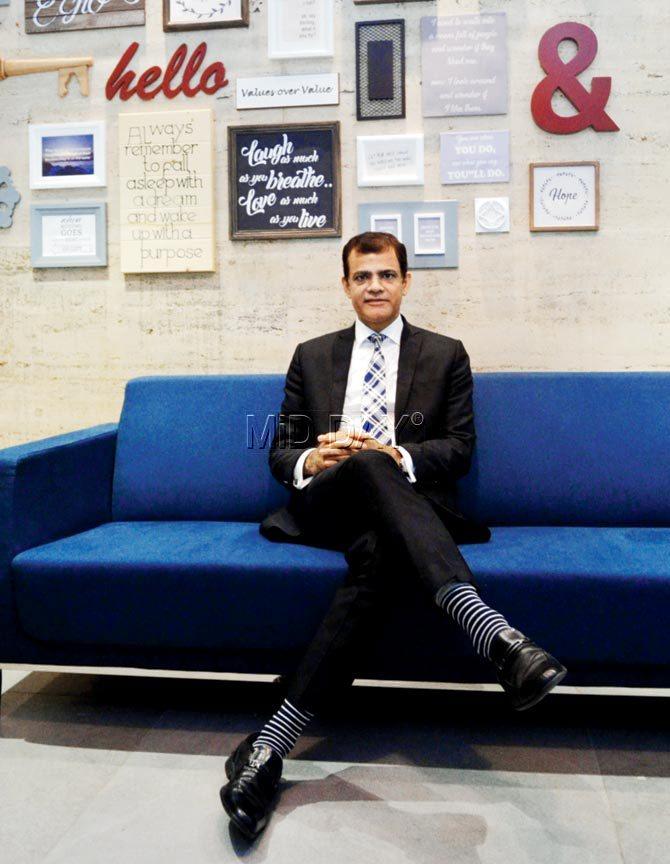
Anju Puri. Pic/Bipin Kokate
Agreeing on rent
The full boom of real-estate leasing for restaurants started in 2012, says Anuj Puri, whose own journey in retail leasing started with Kishore Biyani when he helped him seal the deal for Big Bazaar at High Street Phoenix Mills - where H&M stands today - in 1999.
The 50-year-old, back then, was the founder of Chesterton Meghraj, that merged into Trammell Crow Meghraj and later became Jones Lang LaSalle (JLL). In February 2017, he stepped down from his position as Chairman and Country Head and started Anarock with a swanky office in BKC.
"We called the phase between 2005 and 2010 Mall-eria! Big players started to come in with private equity firms backing them and serious money was being pumped into the restaurant real estate. Developer owners realised that they could get 200 per cent more rent with restaurant leasing, and BKC saw a boom," he explains. Puri played a role in leasing Theobroma, Dhiskiyaoon and China One. They also sold Amlani's Social in BKC's Capital One.
"If the rent is wrong, players perish. I realised there's a science behind the concept of varied rentals. Each restaurant, be it fine dining, fast food or a thali place, required a different margin. I studied the ability of the retailer to pay the landlord. In office rentals, every floor costs the same. Brokers continued to sell that way in malls. But in reality, we worked out that the cost of space changes from ground floor, to first, second and third floor."
That year, India witnessed the birth of a mall a week, with Puri doing deals for 80 per cent of the market. "Interestingly, 2005-2010 saw a mall a month, 2014, two malls a year and in 2015, it went in the negative. Today, the market has matured and 30 per cent of churning happens at these malls because the customer today wants variety."
When they get a case, a look at the menu pricing determines the volume the space will be able to draw. Alcohol is always a benefit. "If the space is too expensive, it will not succeed in an office area and is better placed for a five-star. If it is too cheap, it is not possible to get too much money as rent, as margins are low. But, everyone must be catered to. Developers need to realise this to draw crowds, that in turn will attract the big players The landlord has to see what is good for the consumers," Puri stresses.
A model for success
Aditya Sachdeva, national head, retail at Knight Frank, has led his team to seal the deal for a much-awaited Bengaluru-based brewery that will replace Blue Frog at Todi Mills in the next three months.
According to him, one successful model encourages developers to create similar properties. "For example, after the success of Cyber Hub in Gurgaon, many developers started to plan food hubs. While not all restaurants may have done well, the churning of new places helps attract crowds. Most importantly, there must be a large enough spending population to support such a project," says Sachdeva.
This cluster model seems to be working. "Ek bulb kam roshni, do bulb, double roshni. The youngsters today are not loyal to one brand. They want to go from place to place," says Maru, adding that he is now more bullish about Borivli, Malad, Kandivli and even Navi Mumbai where the rents are lower than Bandra and Lower Parel.
 Subscribe today by clicking the link and stay updated with the latest news!" Click here!
Subscribe today by clicking the link and stay updated with the latest news!" Click here!






